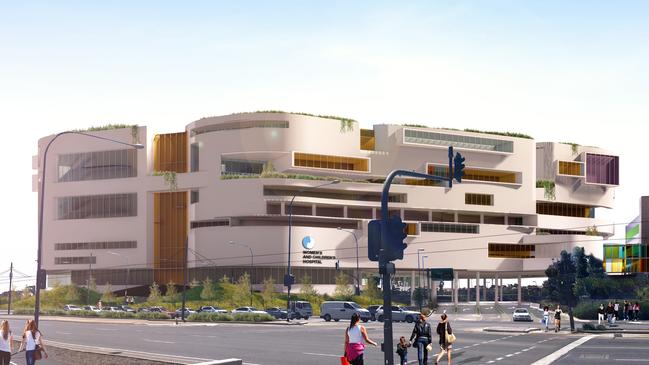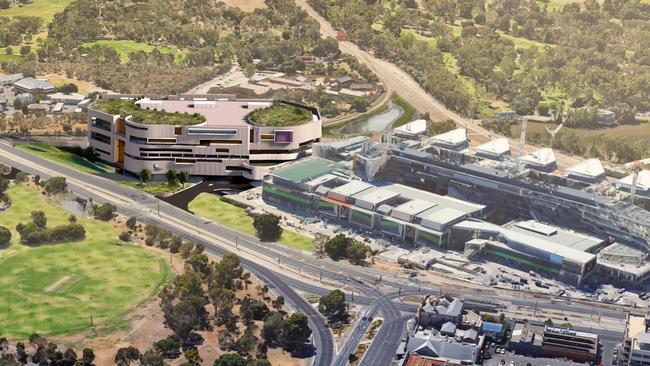New Women’s & Children’s Hospital set for bigger emergency department after doctor backlash
Plans for the new Women’s and Children’s Hospital are set to be expanded to create a far bigger emergency department after a clinician backlash.
SA News
Don't miss out on the headlines from SA News. Followed categories will be added to My News.
The new Women’s and Children’s Hospital is set to have almost double the number of emergency department (ED) beds compared with the existing hospital after a clinician backlash forced a rethink of space.
There will also be more intensive-care beds, paediatric day-treatment spaces and operating theatres than originally planned for the new WCH, which still has no final cost figure.
The expansion plan comes as the WCH ED was on Code White on Sunday – treating more people than its official capacity – and average waiting time at 4pm was 97 minutes.
A new plan, endorsed by the new WCH executive steering committee but yet to be ratified by the state government ahead of Tuesday’s budget, will see an overall extra 59 treatment spaces and 11 additional outpatient consultation rooms compared with the original plan.
The includes 43 paediatric emergency department spaces, compared with 24 at the existing WCH and 39 as originally proposed.
The 13 paediatric intensive care unit beds at the existing hospital were going to drop to 12 but instead are now planned to rise to 16.

Paediatric day unit treatment spaces increase from the planned 22 to 26, and operating theatres increase from the planned 11 to 14 under the new plan.
SA Health chief executive Dr Chris McGowan has written to key clinicians confirming these new increased figures have all been endorsed.
There are 441 treatment spaces at the existing WCH and 140 outpatient consultation rooms.
The new WCH Project team initially decided 445 treatment spaces and 159 outpatient consultation rooms would be sufficient to meet the projected demand and this was endorsed by the committee.
However, after the hospital board, unions and clinicians raised concerns, the government
held two workshops with clinicians and executives last month, which recommended it should have 500 admitted treatment spaces and 170 outpatient consulting rooms.
It also recommended there also be an extra five women’s assessment service spaces for a total of 14.
In April doctors warned a parliamentary committee the new hospital would be too small.
Health and Wellbeing Minister Stephen Wade said the new WCH was a once-in-a-lifetime opportunity to deliver “holistic, world-class healthcare and facilities to South Australian families for generations to come”.
“That’s why we’ve invested significant time and money on the consultation, planning and initial design phase of the hospital,” he said.
“That’s why we are working closely with clinicians, staff and consumers – to ensure we deliver the best possible services to our patients and their families.”
He noted the government had spent $600,000 to free up clinicians and staff to be involved in the consultation stage.

More than 580 clinicians, 110 other staff and 35 consumers have been involved in more than 1000 hours of consultation.
“The government will continue to listen closely to their feedback,” Mr Wade said.
“Our WCH clinicians are leaders in maternity and paediatric healthcare, and the new hospital will provide the facilities to support their outstanding service they provide to the women, children and babies of this state.”
Earlier this month the WCH opened nine overflow spaces in its ED following chronic overcrowding and long waits for some patients.
Meanwhile the Opposition has come up with an uncosted plan to hire more paramedics, post additional ambulance crews to under-serviced areas and increase the number of drug rehabilitation beds to ease hospital pressure.
Opposition Leader Peter Malinauskas released a 30-point plan he says the government should implement in Tuesday’s state budget to address the ongoing ramping crisis.
Premier Steven Marshall hit back at the plan, saying he won’t be “taking lessons” from Labor.
Labor’s document does not outline how many beds should be created or how many paramedics should be hired.




